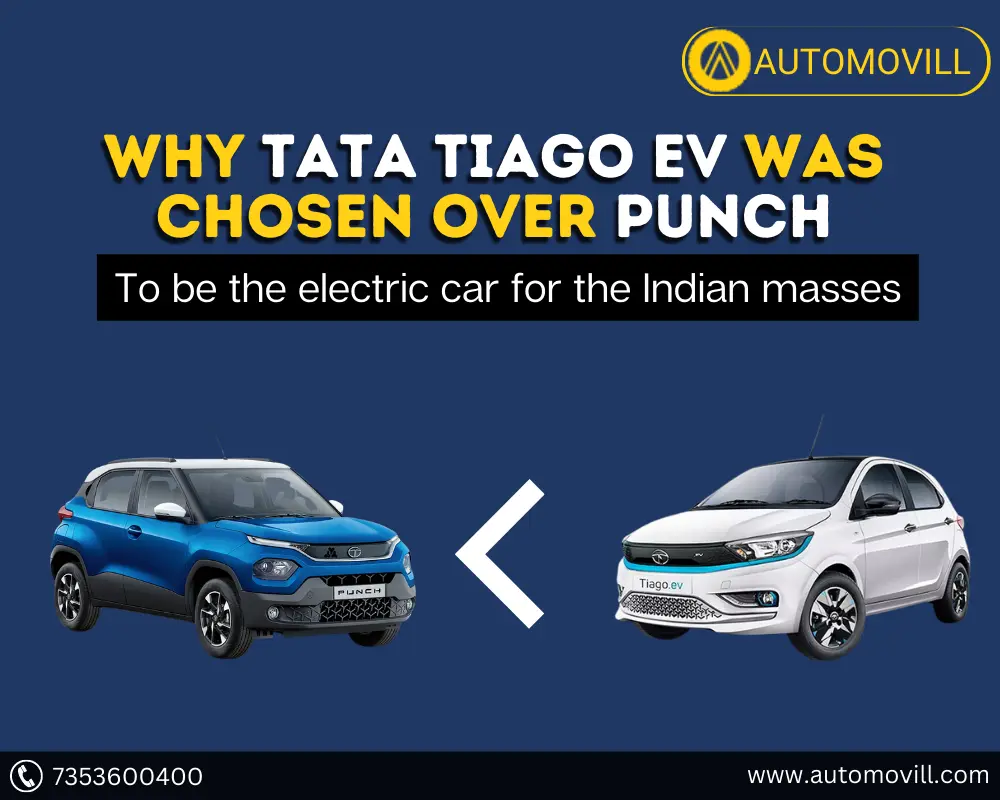
The Tata Tiago EV was chosen by Tata Motors, an Indian automotive company, as the electric car for the Indian masses because it is a more affordable and practical option compared to other electric vehicles on the market.
The Tata Tiago is a small hatchback that is well-suited for the Indian market, where most people prefer smaller, more fuel-efficient vehicles. It also has a relatively low price point, making it more accessible to a wider range of consumers. Additionally, the Tata Tiago EV has a range of up to 142 km on a single charge, which is sufficient for most daily commuting needs in India.
In contrast, the Punch electric vehicle, which was developed by an Indian startup, was not as widely available or as well-established as Tata Motors, and therefore may not have been considered suitable for mass production and distribution.
Comparison between Tata Tiago and Punch
- The Tata Tiago EV is a fully electric version of the Tata Tiago, a small hatchback that was launched in India in 2016.
- It is powered by a 30.2 kWh lithium-ion battery pack that is located under the floor of the vehicle, which helps to optimize the weight distribution and improve the handling and stability of the car.
- The Tata Tiago EV has a maximum range of 142 km on a single charge, as certified by the Indian Automotive Research Association (ARAI). This range is suitable for most daily commuting needs in India, where the average daily distance travelled is typically less than 100 km.
- The Tata Tiago EV has a top speed of 80 km/h and can accelerate from 0 to 60 km/h in 11 seconds. It is equipped with a 3-phase AC induction motor that produces 30 kW (40 horsepower) of power and 85 Nm of torque.
- The Tata Tiago EV comes with a number of features and technologies to enhance the driving experience and improve the overall efficiency of the car. These include regenerative braking, which captures energy from the brakes and converts it into electricity that is used to charge the battery; and a “Drive-Eco” mode, which optimizes the car’s performance and energy consumption to maximize range.
- The Tata Tiago EV is priced at around INR 9.99 lakh (about $13,500) in India, which is significantly lower than the price of many other electric vehicles on the market. This makes it an attractive option for budget-conscious consumers who are looking to switch to electric mobility.
- The Tata Tiago EV was developed by Tata Motors, an Indian multinational automotive company that is based in Mumbai. Tata Motors is one of the largest and most successful automotive companies in India, with a wide range of vehicles in its portfolio, including passenger cars, commercial vehicles, and defense vehicles.
- The Tata Tiago EV was launched in India in January 2020, as part of the company’s efforts to transition to electric mobility and reduce its carbon footprint. It is the first fully electric vehicle from Tata Motors to be launched in India, and was developed in collaboration with the Tata Motors European Technical Centre (TMETC) in the UK.
- The Tata Tiago EV is available in a single variant, called the “XT+” variant, which is the top-end trim level of the regular Tata Tiago. It is equipped with a number of features and technologies that are not available on the lower trim levels, including air conditioning, power windows, power steering, and a touchscreen infotainment system.
- The Tata Tiago EV is designed to be a practical and affordable electric vehicle for the Indian market. It is smaller and more fuel-efficient than many other electric vehicles on the market, which makes it well-suited for the needs of most Indian consumers. It is also relatively affordable, with a price point that is significantly lower than many other electric vehicles on the market.
- The Tata Tiago EV is assembled at Tata Motors’ facility in Sanand, Gujarat, which is one of the company’s major production hubs in India. The facility is equipped with state-of-the-art manufacturing and testing equipment and has a production capacity of up to 250,000 units per year.
